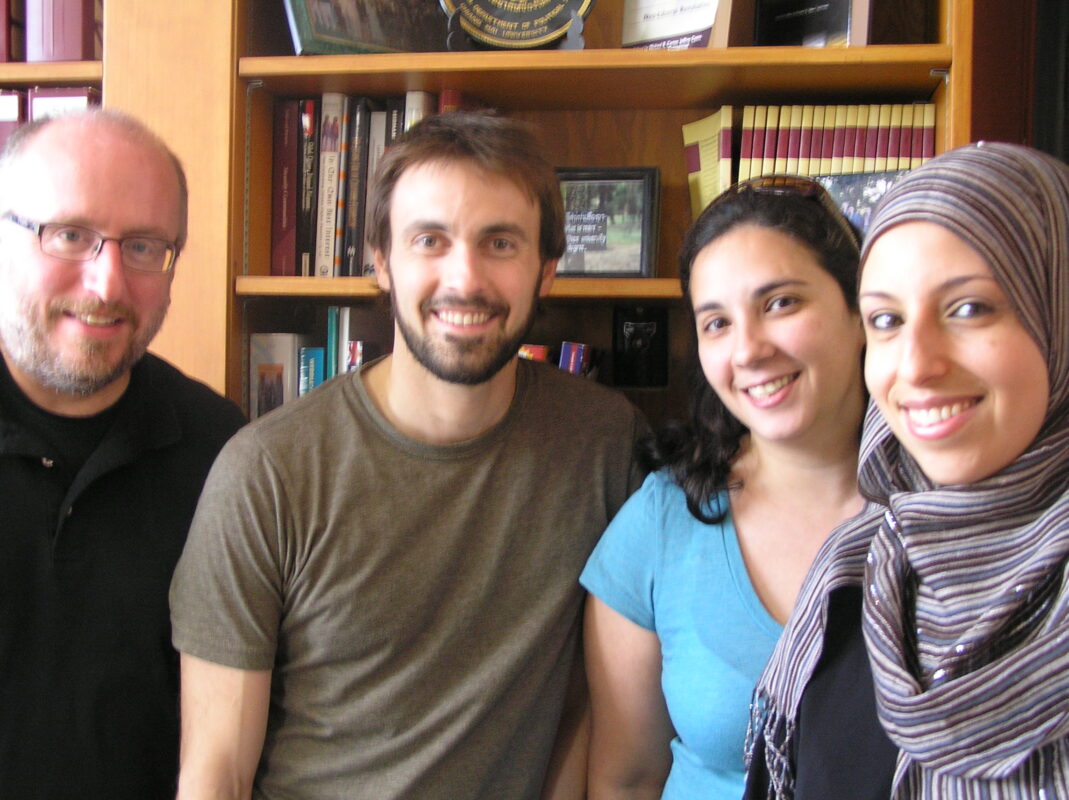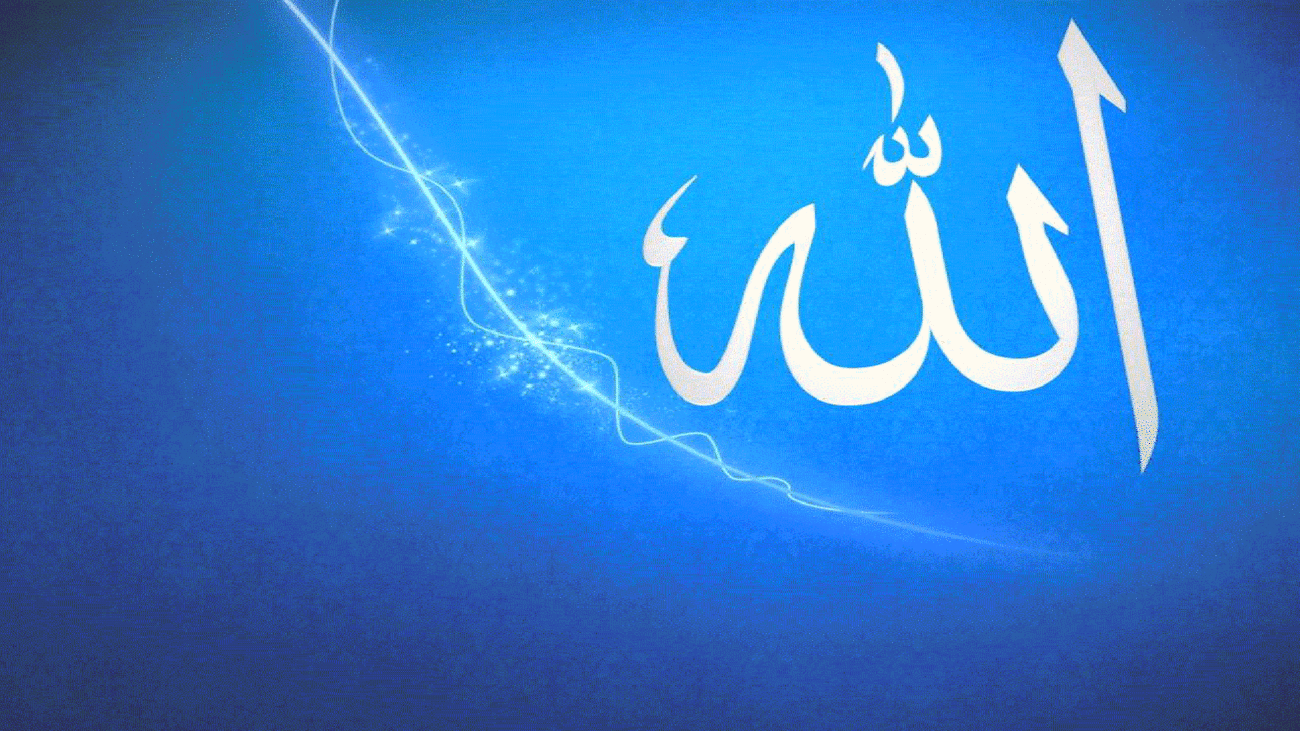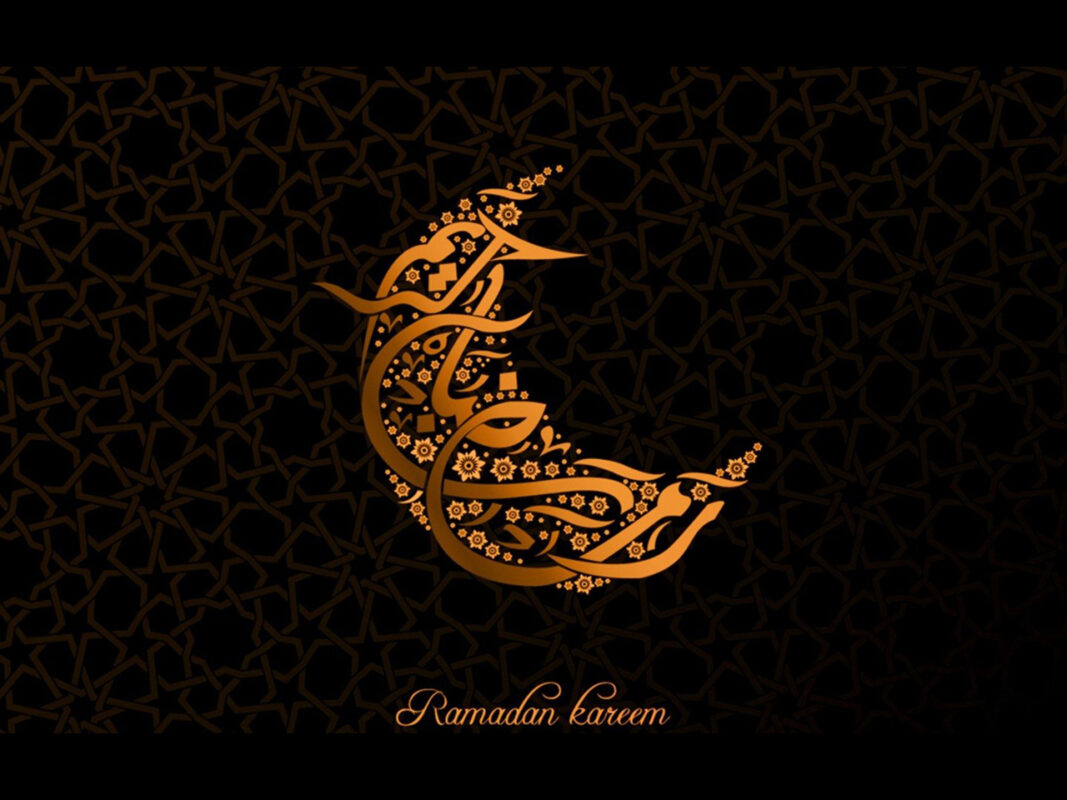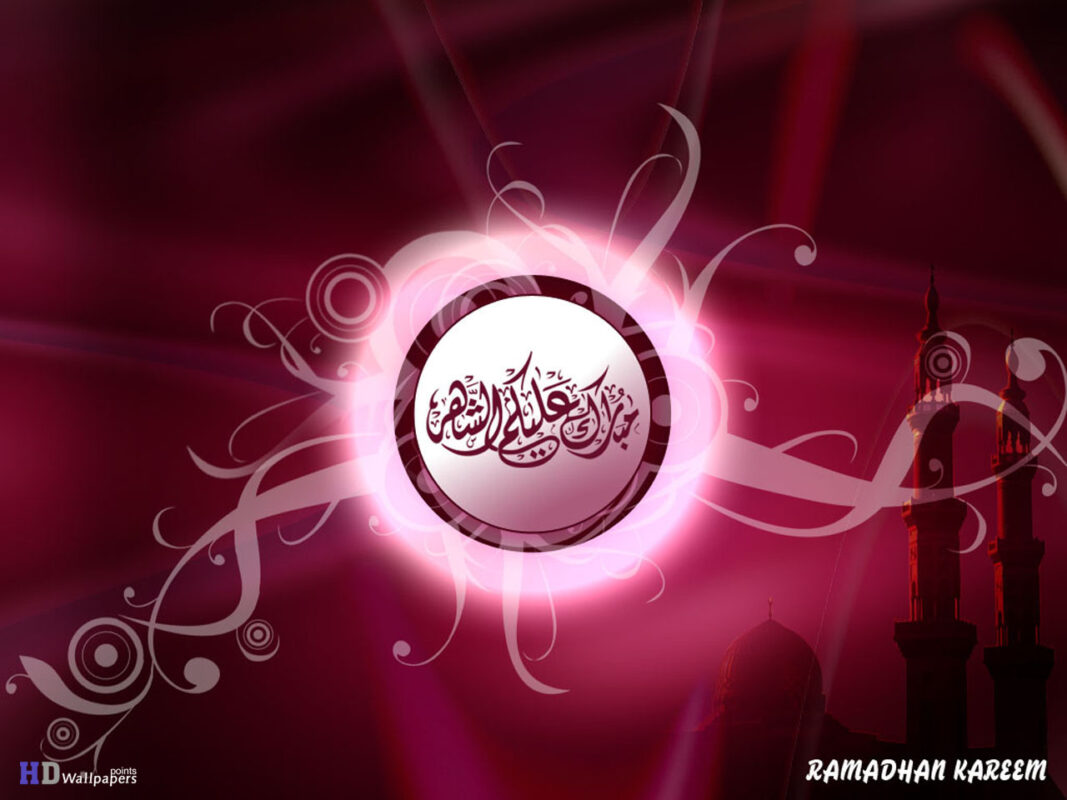“And in the earth are neighbouring tracts, and gardens of grapes, and green crops, and date-palms, growing into two or three from a single stem, or otherwise, watered with the same water; yet some of them We make more excellent than others to eat. Verily, in these things there are signs for the people who understand.” (I)
This noble verse comes at the beginning of Surah Ar-Ra‘d (The Thunder), a chapter revealed in Makkah comprised of 43 verses after the basmallah (In the name of Allah, Most Merciful, Most Compassionate). The reason for its name is the reference to thunder (a recurring meteorological phenomenon) as a way to glorify and praise Allah as Allah the Almighty says in Surah Al-Isrâ’, what can be translated as:
“The seven heavens and the earth and all that is therein, glorify Him and there is not a thing but glorifies His Praise. But you understand not their glorification. Truly, He is Ever Forbearing, Oft-Forgiving.” (II)
The main theme of Surah Ar-Ra‘d is the tenets of faith which include:
- Belief in the Oneness of Allah the Almighty.
- That He has no partner and no one could ever resemble Him.
- That every description must befit His Glory and that servitude should be totally submitted to Him alone.
- Belief in His angels and the Holy Scriptures and messengers.
- Belief in the last revelation to the last of His Messengers (may Allah’s peace and blessings be upon them all).
We must also believe, as it was mentioned in all religions, in the certainty of the Day of Resurrection and Judgment, and in heaven and hell. We must believe that the Holy Qur’an is integral and protected by Allah the Almighty against distortion. We must also follow the Sunnah (sayings, orders and actions) of the last of the Messengers, the Prophet Muhammad (peace be upon him).
Signs of creations in Surah Ar-Ra‘d:
There are many verses in Surah Ar-Ra‘d that refer to a large number of scientific facts and phenomena in the universe. The following are some of these facts:
- Raising the heavens with invisible pillars.
- Subjecting the sun and the moon, each running its course for an appointed term.
- Extending the earth (by making it round), and placing firm mountains and their relationship with forming rivers of flowing water.
- Creating vegetables, fruits and everything else in pairs (of opposite gender or type).þ
- The gradual alternation between day and night, which refers to the spherical shape of earth and its revolving on its axis relative to the sun.
- Creating the earth’s crust in the form of neighbouring plates, and making various different rocks within each plate due to difference in origin, and in geological and chemical characteristics. This results in different kinds of soil formed from rock decomposition (by weathering and erosion) and also results in the variability in their ability to act as a medium for vegetation under different environmental conditions (climatic and topographical).
- Creating gardens of grape vines, and green fields, and date-palms, growing into two or three from a single trunk, or otherwise (one trunk for every palm), watered with the same water; yet Allah makes some of them more favoured than others to eat. These facts clearly indicate the diversity of vegetable groups in the same soil, watered with the same water and under the same environmental conditions. It also implies the glory of the diversity of these neighbouring sections of land that are different in their rocky and mineral content and encompass different environmental conditions. That diversity has led to different kinds of soil and agricultural environment. Moreover, the diversity of growing plants under the same conditions indicates Allah’s wonder in each plant sprout. Geneticists are beginning to discover these wonders by studying the genomes for each species. They are also investigating the variety in the genetic makeup that results from mating and how it leads to differences in taste, colour, size and form of each plant.
- Referring to the fact that human bodies decay into dust after death and to its resurrection from dust once again.
- Referring to the fact that Allah the Almighty knows what every female bears, and by how much the wombs fall short (of their time or number) or exceed. Everything with Him is in due proportion.
- Referring to the occurrence of thunder and lightning and their relation to clouds heavy with water.
- Mentioning that everything in the heavens and the earth falls in prostration (submits) to Allah alone, willingly or unwillingly, as do their shadows in the mornings and in the afternoon.
- The accurate scientific comparison between darkness and light
- Sending down, by Allah’s Will and Power, water (rain) from the sky in due measure, and its flow in the valleys in due proportion.
- Drawing an analogy between obvious Truth and the benefits for mankind that rests in the earth such as mineral deposits carried by floods; and between Falsehood and the foam that passes away as scum upon the shores or the slag that rises to the surface when precious minerals are melted to purify them from their impurities.
- Mention of the reduction of the earth from its outlying borders and using that idea in figures of speech and metaphors.
- Confirming that all Holy Scriptures, prior to the Prophet’s (PBUH) mission, mentioned the coming of the last of the Messengers (PBUH).
- Underlining the value of the intellect and the obligation of using it sincerely and deeply to contemplate our souls and the universe so that we can understand the truth about our existence and our role in life.
The interpretation of the verse by scholars:
“And in the earth are neighbouring tracts, and gardens of grapes, and green crops, and date-palms, growing into two or three from a single stem, or otherwise, watered with the same water; yet some of them We make more excellent than others to eat. Verily, in these things there are signs for the people who understand.” (I)
Ibn Kathir (may Allah have mercy on him) said: “this means neighbouring lands, although one may be good and grows what benefits people the other could be marshy and salty”. The above verse includes all different types of land: Lands that are red, white, yellow, and black, Lands that are hard and the others that are easy, Lands that are thick and others that are thin, and all could be next to one another. Only Allah has the Ability to make this possible, there is no Lord worthy of worship but Him. In the holy verse that can be translated as, “And in the earth are neighbouring tracts, and gardens of grapes, and green crops, and date-palms”, green crops and date-palms could either be combined (conjugated) directly with “gardens of vines” and hence “gardens” would denote: gardens of vines, gardens of green crops and gardens of date-palms. Or it could be combined with “neighbouring tracts” and in that case the elements stated by this verse to be “in the earth” are: neighbouring tracts, gardens of vines, green crops and date palms. The word Sen’wan (growing into two or three from a single trunk) refers to branched trunks; and Gha’yr Sen’wan (only one trunk) refers to plants that have a trunk that is not branched. The verse that can be translated as, “watered with the same water; yet some of them We make more excellent than others to eat.” shows the difference between the types of fruits and plants as regard to their forms, colours, taste, smell, leaves and flowers, although they all use and depend on the same water. All that represents proofs and evidences for the people who understand that Allah the Almighty created diversity among things according to His Will and that is why He says what can be translated as, “Verily, in these things there are signs for the people who understand.”
Some of the scientific implications
Following are some scientific facts from the noble verse:
First, “And in the earth are neighbouring tracts.” This inimitable Qur’anic expression includes the following facts:
The earth’s crust consists of 12 large neighbouring plates in addition to a number of smaller ones. They are separated by a huge network of rifts, the depth of which ranges between 65 and 150 km; their length reaches tens of thousands of kilometres. These plates surround the earth completely like a twisting single crack that scientists liken to the seams on a tennis ball.
- Every plate in the crust has its own origin and consequently these plates differ in their rocky and mineral content and in their density and thickness.
- Every plate in the crust consists of three main kinds of rocks which are: the igneous, the sedimentary and the metamorphic rocks along with their different combinations, which in turn form neighbouring tracts in each plate of the crust. These differ in their natural and chemical properties, in their external appearances as well as in their forms on the surface.
- The igneous rocks, for example, are divided into acidic, intermediate, basic and ultra-basic groups. In each group there are rocks that exist at profound depth, with high crystallization, and in which crystals reach great sizes (pegmatitic). There are also rocks, which exist in a medium depth from the earth’s surface and consequently their crystallization is medium as well as their crystals’ size (phaneritic). Also, there are the glassy volcanic rocks (meaning they lack crystallization) or are very low in crystallization (aphanitic). The same diversity applies for the sedimentary and metamorphic rocks. Depending on the dominance of any of these rock types, in any part of the rocky cover, differences in the formed neighbouring tracts for each of these plates will exist and consequently the same is true throughout the rocky surface of earth.
- There is an apparent difference between the kinds of soil resulting from the erosion of each rock type, which is due to the difference between the rocks’ source and their chemical and mineral content, as well as the differences in environmental circumstances (climate, topography, existing forms of life, etc.). The soil covering each kind of formed rock, from each plate of earth’s covering, differs greatly from one spot to another, taking the form of neighbouring tracts. Thus, it gives the land tremendous diversity in its natural and chemical attributes and in its arability.
So, the earth differs from once place to another based on differences between neighbouring tracts, differences between the plates forming its rocky cover, differences in the kinds of rocks forming each one of those plates, and differences in the kinds of soil resulting from weathering and erosion of each type of rock. All this exists under many environmental circumstances, in different climatic regions and topographies, all the while supporting varied forms of life. Hence, these neighbouring tracts vary widely in their arability and in their vegetation that produces different fruits.
Research has showed us that every form of life lives in its own environment; and, accordingly, the earth’s cover consists of many domains and ecosystems, each of them distinguished by its geographical characteristics (topographies, climate, kinds of rocks and soils, and its related biological groups). For example, Allah the Almighty has granted some forms of life the ability to coexist with each other; a useful coexistence for the two kinds in order to live in a mutual symbiosis. This coexistence may be useful to only one of them, but at the same time it is not harmful to the other. If it is harmful to the host, we call this a parasitic relationship.
Every living organism has its own habitat, i.e. its location in a specific environmental region, with a specific ecosystem including kinds of rocks and soils, surface topographies, climate conditions, and kinds of coexisting living organisms with which they interact, affect and are themselves affected.
Ecosystems are differently distributed on the earth’s surface. They vary from tropical zones that are distinguished by high temperature and high humidity, to arctic regions characterized by their cold, dry environment, with moderate regions in between. They even vary in the same location between high summits, sloping hills and plains. On summits where height exceeds three thousand meters, life forms are reduced to some algae that grow on ice or pools resulting from molten ice. Tiny flowers spread between rock crevices grow between about 2500-3000 m. Alpine fir trees grow between about 2000-2500 m. Conifer forests grow between about 1500-2000 m. Deciduous forests grow between about 1000-2000 m. Below that, from a thousand meters above sea level, forests and different forms of vegetation spread over the land.
Many of these ecosystems overlap each other in a gradual manner, although some of these ecosystems reach distinct boundaries where the environment changes abruptly. Every ecosystem varies according to that gradual or abrupt change of climatic conditions or to human intervention, which leads to the change of the vegetation or its elimination, or according to animal migration or extinction. All this contributes to the diversity of neighbouring tracts that differ in their geology and their physical and chemical attributes. They also differ according to their soils, their environmental conditions, the native life forms and the relative geologic age of the region. Since these neighbouring tracts are in a state of constant change, the noble Qur’anic verse referred to the term tracts as an indefinite noun (tracts) and not as a definite one (the tracts); it is indeed one of many fascinating flares of the verse.
Scientists did not recognize these facts until the last decades of the nineteenth century and the beginning of the twentieth century. The fact that they were mentioned in the Holy Qur’an in the beginning of the seventh century and revealed to an illiterate prophet (PBUH), in a nation that had an overwhelming majority of illiterates, proves without a doubt that the Holy Qur’an is truly the words of Allah, and asserts the Prophethood of the Last of the Messengers (may Allah’s blessings and peace be upon him, his family, and Companions and those who followed his guidance and words until the Day of Judgment).
Second, “and gardens of grapes, and green crops, and date-palms.” The noble verse refers to the following scientific facts about these plants:
“And gardens of grapes”
The word einab (grape) was mentioned eleven times in the Holy Qur’an, out of which the singular form “grape” (einab and einaban) appears twice and its plural form “grapes” (a’anab and a’anaban) appears nine times. In most cases, the word “palm” was mentioned in singular or plural forms according to the form of the word “grape”.
The grape is a very celebrated fruit, not only because of its high sugar content compared to other fruits, but because it also contains many vitamins (A and C), organic substances such as proteins, acids and enzymes. In addition, it contains salts of many elements such as potassium, sodium, calcium, phosphorus, iron, and many other organic and inorganic compounds, which are found in balanced percentages. All these benefits make grapes a very beneficial food and the purest that man can have.
Grapes also proved to have a noticeable efficacy in purifying the blood of toxins, wastes, organic and inorganic residues, viruses, fungi and other disease causing germs. This fruit strengthens the immune system, rebuilds damaged cells, especially when eaten on an empty stomach, i.e. after fasting for a whole day and over a five to seven week period. The reason for the quick interaction of grapes in the human body is due to its direct absorption without the need for digestion.
Grapes have been successfully used in treating many diseases such as gout (arthrolithiasis, rheumatic diseases, Bilharziosis (schistosomiasis) related diseases, anaemia, digestive and respiratory diseases, liver and bladder infections, internal and external ulcers, mouth and gum infections and tooth cavities, and many kinds of cancers, especially in their initial stages. It has been recently discovered that grapes contain a very effective component for treating cancers and other similar incurable diseases in their different stages. This component is called Resveratrol and it exists—in low levels—in the fruits of seventy- two other plants such as mulberries, peanuts, and in some legumes such as chickpeas, beans and lentils. Dr. Johanna Brandt (who was cured from cancer after eating grapes continuously for nine years) affirmed these facts. She wrote her story in a book titled “The Grape Cure. ISBN 0879040025” The book was published in New York in 1928 and was republished in 1989 as “How to Conquer Cancer, Naturally, ISBN 0930852354”.þ
Mr. Basil Shackleton has also confirmed the great effects of grapes after struggling with the renal failure disease for about forty years. He published a book entitled “The Grape Cure: A Living Testament, ISBN 0722502028” where he mentioned his and Dr. Johanna Brandt’s stories as well as other stories that described the positive effects of grapes in the treatment of many diseases. The book was translated (into Arabic) by Dr. Muhammad Al-Sheikh Omar, printed by Al-Madany Organization (68 Al-Abasia street/Cairo) and distributed for free by Dr. Abd Al-Rahman Omar Nassif’s library (Jeddah, Kingdom of Saudi Arabia). The grape’s juice, concentrated or diluted, is considered one of the strongest antiseptics; its solutions are used in cleansing ears, nose, mouth, and larynx. It can also be used as a sort of dressing in the treatment of wounds and external abscesses. Grapes can be dried to become raisins without losing any of their nutritional or therapeutic value because raisins retain them for long periods.
The great benefits of grapes mentioned above, along with others not yet discovered, might be the reason behind mentioning that particular fruit in the Holy Qur’an in eleven places in ten noble chapters. Vineyards were described as heavens in most of the verses; it was depicted as a heavenly fruit even though heaven is a guarded secret that only Allah the Almighty knows about, its laws and features are different from what we find on earth. Grapes were described as a heavenly fruit in Surah An-Naba’ (The Great News) in order to make it more comprehendible for people, and as an honour for the grapevine and its blessed fruit.
“And green crops, and date-palms”
The word “green crops” here refers to all kind of plants. It was mentioned in this verse and in ten other places in the Holy Qur’an in addition to four other places where it appears as a verb or a subject. The reason behind mentioning this general term “green crops” along with the specific term such as grapes and palms in this particular verse, as well as figs, olives, pomegranates and bananas in other places, is to emphasize their specific importance compared to the rest of fruits and plants.
Palms are evergreen trees; their very long trunk ending in a cluster of leaves at its top distinguishes these trees. Palm trees have no branches; the leaves that cover the buds on the top do not fall unless by human intervention. Palms’ fruits (dates), are characterized by their high nutritional value. The percentage of carbohydrates (including simple sugars) in dried dates exceeds 70%; water 13%, fibre 10%, fat up to 2.5%, and mineral salts up to 1.5%. The remaining percentage includes vitamins (A, B and C), proteins, hormones and antibiotics. Among these hormones there is one that consists of nine amino acids. It resembles the hormone oxytocin, which plays an important role in the human body (male and female). Oxytocin stops bleeding, stimulates milk production for nursing, facilitates childbirth, heals the uterus after giving birth, stimulates bonds of love and friendship, causes relaxation, and helps to eliminate sadness in both male and female. Dates also contain the estrogen hormone that has many functions; among its important functions is that it regulates the presence of fatty acids and salts in the blood.
Magnesium salts, manganese and iron are very important components of dates. They are found in reasonable amounts and are easily absorbed by the body. Magnesium salts, for instance, have great effects on the glands including the endocrine glands that secrete hormones. They also play a role in calming the nervous system, maintaining the health of bones and teeth, increasing the rate of cell growth, helping in the elasticity of tissues, resisting acid toxins, and in decreasing body temperature. As for manganese, its salts act as a sedative to the nerves, a mood leveller, for anti-anxiety, and to reassure the soul. Iron plays an important role in the construction of haemoglobin and it passes to infants during the breast-feeding process.
Thus, the Holy Qur’an focused on the palm due to its importance over other plants and due to its fruit’s characteristics. Therefore, the word palm(s) was mentioned in twenty Qur’anic verses in sixteen different chapters. Some of these verses mentioned it in the singular form “nakhla” (palm) as it appears twice in Surah Maryam (Mary) to indicate a specific palm. In ten other verses it appears as a definite plural noun “al-nakhl” (the palms), or as an indefinite plural “nakhl” (palms) in seven other verses, and it is mentioned once as “Nakhlan”.
“Growing into two or three from a single trunk, or otherwise (one stem root for every palm), watered with the same water; yet some of them We make more excellent than others to eat”
Nowadays, scientists have discovered more than 400,000 species of plants, out of which 250,000 species belong to the flowering plants that Allah the Almighty gave the ability to produce its food “and green crops, and date-palms”
The word “green crops” here refers to all kind of plants. It was mentioned in this verse and in ten other places in the Holy Qur’an in addition to four other places where it appears as a verb or a subject. The reason behind mentioning this general term “green crops” along with the specific term such as grapes and palms in this particular verse, as well as figs, olives, pomegranates and bananas in other places, is to emphasize their specific importance compared to the rest of fruits and plants.
Palms are evergreen trees; their very long trunk ending in a cluster of leaves at its top distinguishes these trees. Palm trees have no branches; the leaves that cover the buds on the top do not fall unless by human intervention. Palms’ fruits (dates), are characterized by their high nutritional value. The percentage of carbohydrates (including simple sugars) in dried dates exceeds 70%; water 13%, fibre 10%, fat up to 2.5%, and mineral salts up to 1.5%. The remaining percentage includes vitamins (A, B and C), proteins, hormones and antibiotics. Among these hormones there is one that consists of nine amino acids. It resembles the hormone oxytocin, which plays an important role in the human body (male and female). Oxytocin stops bleeding, stimulates milk production for nursing, facilitates childbirth, heals the uterus after giving birth, stimulates bonds of love and friendship, causes relaxation, and helps to eliminate sadness in both male and female. Dates also contain the estrogen hormone that has many functions; among its important functions is that it regulates the presence of fatty acids and salts in the blood.
Magnesium salts, manganese and iron are very important components of dates. They are found in reasonable amounts and are easily absorbed by the body. Magnesium salts, for instance, have great effects on the glands including the endocrine glands that secrete hormones. They also play a role in calming the nervous system, maintaining the health of bones and teeth, increasing the rate of cell growth, helping in the elasticity of tissues, resisting acid toxins, and in decreasing body temperature. As for manganese, its salts act as a sedative to the nerves, a mood leveller, for anti-anxiety, and to reassure the soul. Iron plays an important role in the construction of haemoglobin and it passes to infants during the breast-feeding process.
Thus, the Holy Qur’an focused on the palm due to its importance over other plants and due to its fruit’s characteristics. Therefore, the word palm(s) was mentioned in twenty Qur’anic verses in sixteen different chapters. Some of these verses mentioned it in the singular form “nakhla” (palm) as it appears twice in Surah Maryam (Mary) to indicate a specific palm. In ten other verses it appears as a definite plural noun “al-nakhl” (the palms), or as an indefinite plural “nakhl” (palms) in seven other verses, and it is mentioned once as “Nakhlan”.
“Growing into two or three from a single trunk, or otherwise (one stem root for every palm), watered with the same water; yet some of them We make more excellent than others to eat”
Nowadays, scientists have discovered more than 400,000 species of plants, out of which 250,000 species belong to the flowering plants that Allah the Almighty gave the ability to produce its food through photosynthesis. About 150,000 kinds belong to the non-flowering category and cannot perform photosynthesis so they get their needs through other ways.
Diversity between plants of the same species occurs during sexual reproduction as a result of meiotic germ cell division followed by unification of two germ cells from two different individuals one male and the other female. This form of interspecies variation along with the other interspecies variation takes place until the fruits, grains and vegetable products become numerous so that they fulfil all the life needs on earth.
Every plant is strongly influenced by its environment, which is in turn, influenced by its geography (climate, topography, the various kinds of rocks and soils, and the abundance or lack of water). Although plants are influenced by their surroundings, their primary influence comes from their genetic makeup. Essentially, each plant’s genome controls its attributes and its different abilities to use the elements and compounds from the soil. Every plant species, as every other living organism, has a specific number of chromosomes that distinguish it from other plants. Every chromosome carries a number of genes that encode the information necessary for cells to synthesize certain proteins. The diversity of genes from one plant to another leads to the diversity of the proteins produced within the cell, and so their fruits differ in their taste, smell, colours, form and size. Hence, in harmony with its surrounding environment, each plant has an appropriate form, colour, and size. Although they can be alike and derive from one species, or can be dissimilar and come from different species, they are still watered by the same water; yet some of them are more favoured than others to eat.
The noble verse refers to the sciences of taxonomy, genetics, ecology and geology. These scientific truths did not become evident to mankind until the end of the eighteenth century and in a primitive way. They were not refined until the last decades of the twentieth century. Their existence in the Holy Qur’an, which was revealed at the beginning of the seventh century, and with such scientific accuracy and inclusion, is evidence that it is Allah’s words and also a proof the Prophethood of the last Messenger (PBUH). That is why Allah the Almighty says at the end of the verse what can be translated as, “Verily, in these things there are Ayah (proofs, evidence, lessons, signs) for the people who understand”.
May peace and blessings be upon the Prophet Muhammad, his family, his Companions and all those who follow his guidance until the last day and all praise is for Allah, the Lord of all creation.
(I): Surah Ar-Ra‘d The Thunder: V 4
(II): Surah Al-Isra’ (The Journey by Night): V 44
Source: Dr. Zaghloul El-Naggar [External/non-QP]







